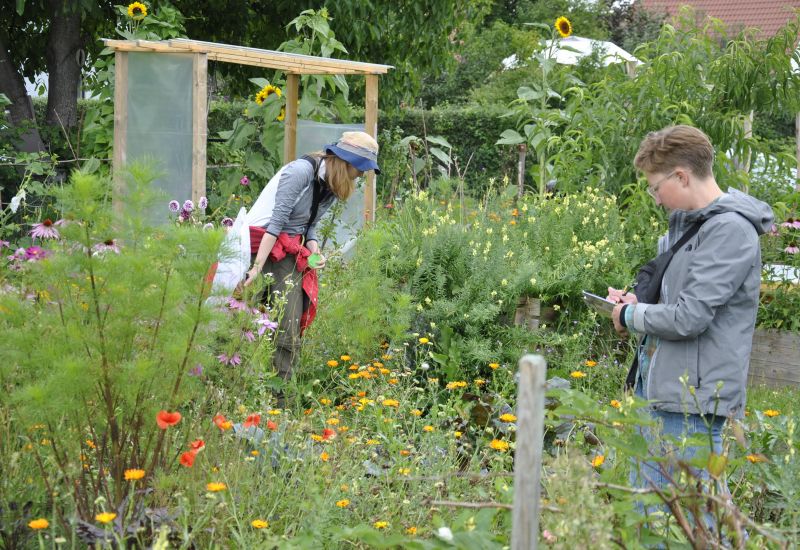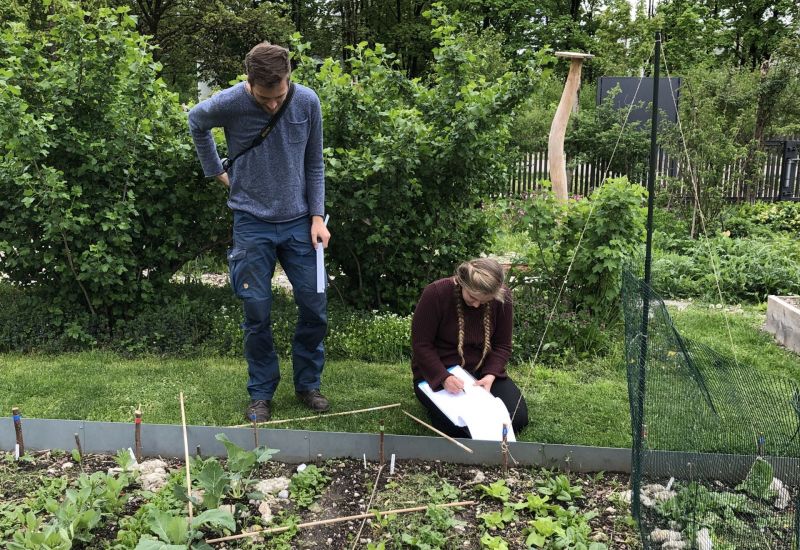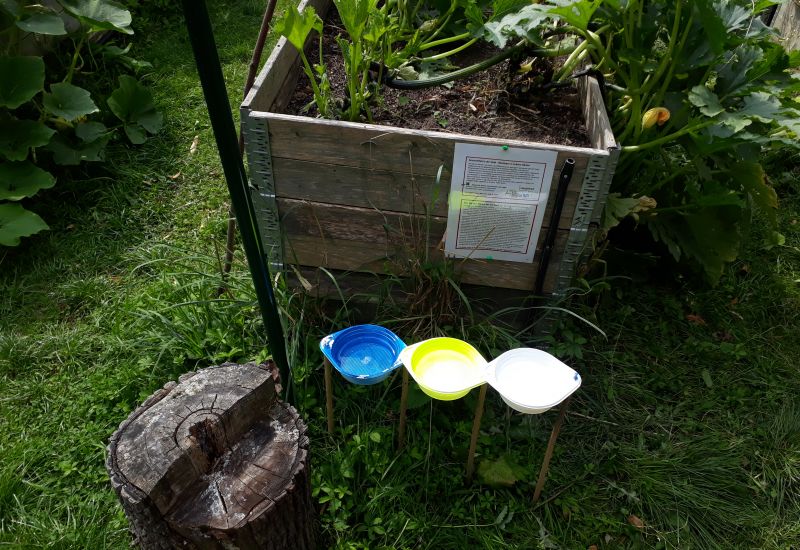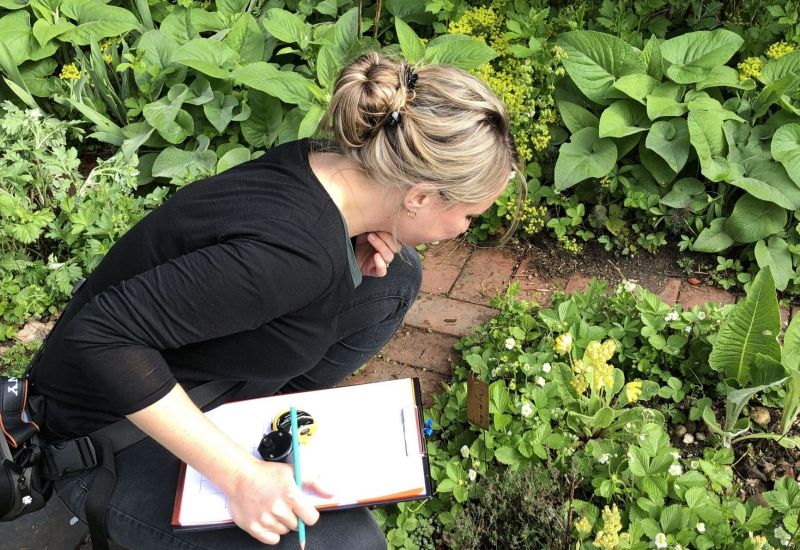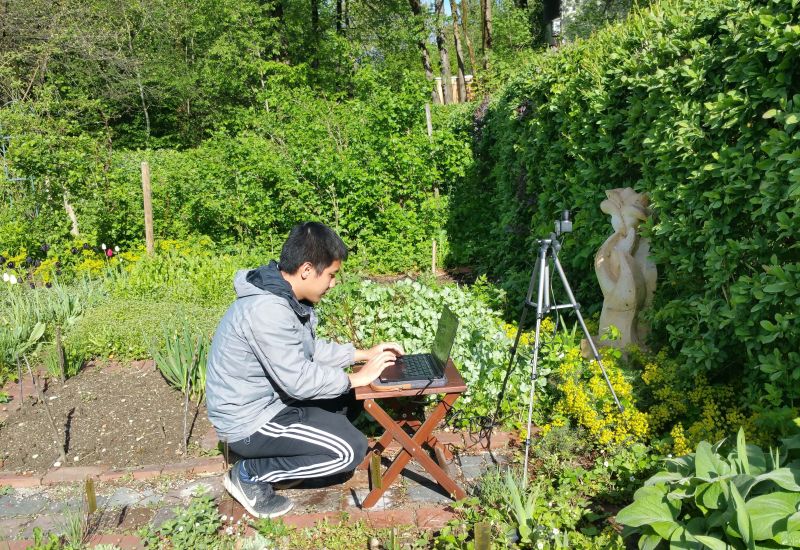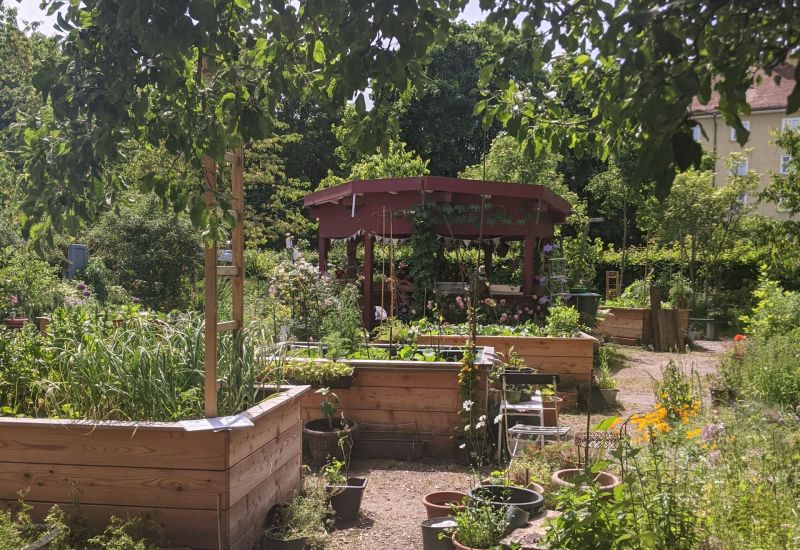Urban ecology
We use different field methods in ecology to study wild pollinators, plant diversity, garden characteristics and climate in community gardens across Berlin and Munich.
We visit each garden about every month during the summer (April to September) with a team of interdisciplinary field scientists. In the center of each garden, we study the plants and animals within a 20 x 20 m area to ensure that the studies are comparable, even though the gardens are very different in size.
